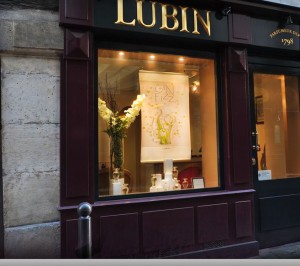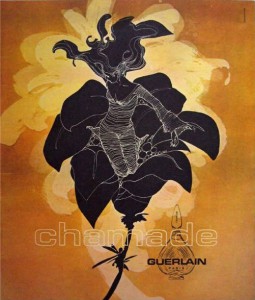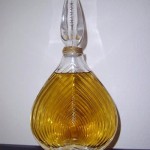Agustin Reyes – Royal Violets
For this first review, I thought the best place to start was with my first fragrance. While I would graduate on to more sophisticated fragrances, by cultural and maternal imperative, my introduction to scent was with “Royal Violets”, or, as commonly referred to in Spanish, “Agua de Violetas”. It is common practice for children of Latin descent (i.e. Spanish, French, etc.) to wear fragrance from infancy. This practice applies to girls and boys alike, and while the composition may differ from florals to citrus-based fragrance, most products contain a mixture of both. The fragrance is often applied to the hair, a practice which many women continue into adulthood, in a manner similar to the way one would use a dry shampoo.
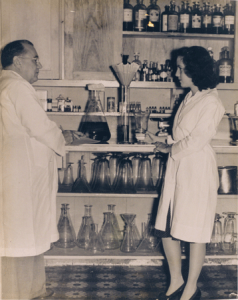
Agustin Reyes
“Royal Violets” was developed by Agustín Reyes, who began his career as a pharmacist’s apprentice in Havana, Cuba. He created the formula for Royal Violets in 1927, where it was originally marketed as “Violetas Rusas” or “Russian Violets”. The original name and packaging reflect the world’s, and especially Paris’s fascination with all things Russian as evidenced by the popularity of Sergei Diaghilev’s Ballets Russes and the works of Igor Stravinsky. Cuba was often described as the “Paris of the Caribbean” and its citizens took great interest in the styles, architecture, and fashion of Paris. Indeed, much of the formerly elegant city of Havana was built in the baroque and neoclassic styles, similar to much of Europe.

Original Packaging for Violetas Rusas
This Paris-mania extended into the ultra-luxurious realm of perfume. The perfume industry was producing radically new fragrances at this time, in part due to advances in perfume science, but also thanks to the jubilant zeitgeist that followed WWI. Styles were changing, social mores were changing, all of which was reflected in the new perfume creations of the time including Quelques Fleurs, Chanel No 5, Shalimar and Nuit de Noel.
While far removed geographically, many Cubans traced their ancestry back to Europe and maintained strong interest in what happened overseas. This extended into the world of fashion and perfumery, and indeed the famous houses of Guerlain and Caron were well-known on the island. It is in this spirit that Royal Violets was created, a factor which is apparent in its smell and composition.
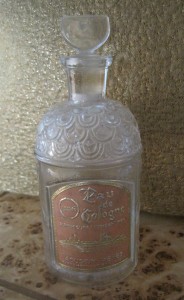
Bottle inspired by Guerlain
The scent was very well-received in Cuba, as were Reyes’s other creations including: Axil, Agua de Portugal, and Nuit de Samedi. The firm also produced their own sandalwood and lavender soaps. The original glass bottles made in Cuba were often modeled after the bottles of the great perfume houses including Guerlain. With the rise of communism in the 1950s, the recipe for Violetas Rusas was smuggled out by the Reyes family into the United States. The formula also underwent a name change to Royal Violets to avoid the painful political associations of exile that the Reyes family and numerous Cubans faced.
Given that I could not recall a time when I did not wear Royal Violets, I never considered its composition. It was simply what one wore. However, as I grew older and began exploring fragrances, I was often drawn back to this first fragrance. Indeed, my love of certain fragrances like Coco Chanel, was surely influenced by this earliest fragrance, which made me think that it was perhaps necessary to take a closer look.
While several of the more popular violet fragrances attempt to capture more of a violet soliflore, Royal Violets is closer to the experience of the entire plant. The top notes of violet are strongly punctuated by a middle accord of bergamot, giving the impression of crushed bright green leaves to the powdery violet. The violet sensation is rounded out by lily of the valley and a touch of rose, giving one the impression of a bouquet of wild flowers. Most surprising however are the bottom notes, which are both warm and spicy thanks to the introduction of vetiver, sandalwood, and orris. This spicy, almost cinnamon-like sensation is softened with a hint of vanilla, and yet remains remarkably sharp, especially when considering that this is a fragrance applied to infants. Despite being extremely affordable, indeed this item can be purchased in many drugstores, it is evident that much consideration was given to the composition. The fragrance has good sillage and a rather potent longevity.
Royal Violets still features a place in the fragrance collection of many Cuban women. Perhaps it is the need to revisit simpler times with a formula that remains largely unchanged, especially in an era when so many beloved fragrances have been altered beyond recognition. One note: please don’t be put off by the low price tag or poor website of this fragrance. We all need some affordable alternatives in our perfume wardrobe and Royal Violets is a marvelous time capsule for less than ten dollars.
Royal Violets can be purchased online at several discount retailers. Please note that this review is for the amber colored Royal Violets in the glass bottle. The company also makes a purple colored version which smells completely different, slightly reminiscent of an inexpensive Kenzo Flower.
Floral oriental
Notes: violet, bergamot, lily of the valley, rose, vetiver, sandalwood, orris and vanilla.
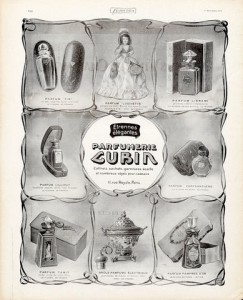 Idole is certainly more unabashedly “feminine” than other Lubin fragrances I have tested, and this fragrance seems to me their version of the femme fatale parfum. That being said, the fragrance maintains a type of discretion that keeps it lady-like in the midst of its sensuality. If you have not had the opportunity of sampling any of Lubin’s vintage fragrances, I would highly recommend seeking them out via a decant service. Kudos to Thevenin for resurrecting this house and for developing what will no doubt be the next generation of vintage masterpieces.
Idole is certainly more unabashedly “feminine” than other Lubin fragrances I have tested, and this fragrance seems to me their version of the femme fatale parfum. That being said, the fragrance maintains a type of discretion that keeps it lady-like in the midst of its sensuality. If you have not had the opportunity of sampling any of Lubin’s vintage fragrances, I would highly recommend seeking them out via a decant service. Kudos to Thevenin for resurrecting this house and for developing what will no doubt be the next generation of vintage masterpieces.
